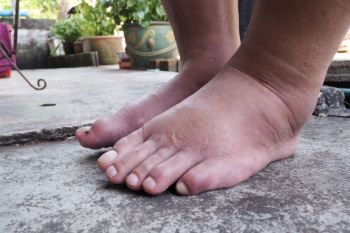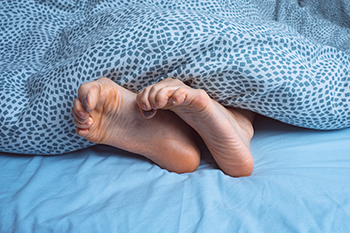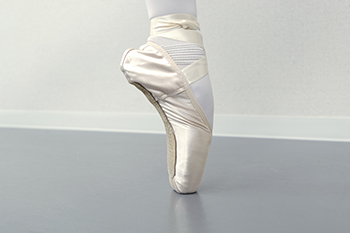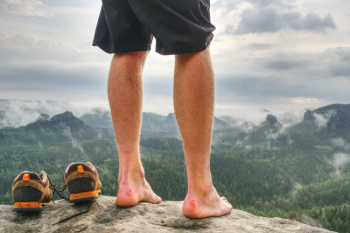Items filtered by date: December 2024
Why Do I Have Swollen Feet?

Swollen feet can be an uncomfortable issue, often caused by injuries or edema. Edema refers to the accumulation of fluid in the tissues, leading to swelling. People who are more likely to experience swollen feet include those with recent injuries, such as sprains or fractures, which can cause localized swelling. Edema can also result from conditions like pregnancy, heart disease, kidney disease, or prolonged standing or sitting. The causes of swollen feet vary, but other contributing factors include poor circulation, high salt intake, or side effects from medications. In some cases, swelling may be a sign of a more serious underlying issue, such as blood clots, infections, or vascular problems. While mild swelling may improve with rest, elevating the feet, or wearing compression socks, persistent or severe foot or ankle swelling should be evaluated by a podiatrist. This type of doctor can help diagnose the cause of the swelling and recommend appropriate treatments. If you are experiencing swollen feet, it is suggested that you schedule an appointment with a podiatrist.
Swollen feet can be a sign of an underlying condition. If you have any concerns, contact Dr. John P. Beaupied of Palos Podiatry. Our doctor can provide the care you need to keep you pain-free and on your feet.
Swollen feet are a common ailment among pregnant women and people who stand or sit for extended periods. Aging may increase the possibility of swollen feet and patients who are obese often notice when their feet are swelling too. There may be medical reasons why swollen feet occur:
- Phlebitis - A condition that causes the veins to become inflamed and can also cause leg pain.
- Liver disease - This may lead to low blood levels of albumin which is a protein. This can cause fluid in the blood to pass into the tissues and several areas of the body can become swollen.
- Heart failure - When the heart doesn’t pump properly the blood that is normally pumped back to the heart can pool in the veins of the legs causing swollen feet.
- Kidney disease - One of the main functions of the kidneys is releasing excess fluid in the body. This type of condition can make it difficult for the kidneys to function properly, and as a result the feet may become swollen.
- Deep-vein thrombosis (DVT)- This is a serious condition where blood clots form in the veins of the legs. They can block the return of blood from the legs to the heart which may cause the feet to swell. It is important to be treated by a podiatrist if this condition is present.
Swollen feet can also be caused by bone and tendon conditions, including fractures, arthritis, and tendinitis. Additionally, there may be skin and toenail conditions and an infection may cause the feet to swell. Patients who take medicine to treat high blood pressure may be prone to getting swollen feet.
Many patients elevate their feet to help relieve the swelling and this is generally a temporary remedy. When a podiatrist is consulted the reason behind the swelling can be uncovered and subsequently treated.
If you have any questions please feel free to contact our office located in Palos Heights, IL . We offer the newest diagnostic tools and technology to treat your foot and ankle needs.
Are Bunions Affecting Your Everyday Life?
Symptoms of Ankle Sprains

An ankle sprain occurs when the ligaments surrounding the ankle joint are overstretched or torn, typically resulting from a twisting motion. This injury often causes immediate pain, swelling, and bruising around the ankle. People with an ankle sprain may experience difficulty walking, putting weight on the affected foot, or moving the ankle. More severe sprains can result in significant instability, where the ankle feels weak or gives way unexpectedly. Repeated or untreated sprains may lead to long-term joint pain or reduced mobility. A podiatrist can diagnose and treat ankle sprains with imaging tests, bracing, or other customized treatments to support healing and restore strength. If you believe you have sprained an ankle, it is suggested that you schedule an appointment with a podiatrist as quickly as possible so proper healing can begin.
Although ankle sprains are common, they aren’t always minor injuries. If you need your ankle injury looked at, contact Dr. John P. Beaupied from Palos Podiatry. Our doctor can provide the care you need to keep you pain-free and on your feet.
How Does an Ankle Sprain Occur?
Ankle sprains are the result of a tear in the ligaments within the ankle. These injuries may happen when you make a rapid shifting movement while your foot is planted. A less common way to sprain your ankle is when your ankle rolls inward while your foot turns outward.
What Are the Symptoms?
- Pain at the sight of the tear
- Bruising/Swelling
- Ankle area is tender to touch
- In severe cases, may hear/feel something tear
- Skin discoloration
Preventing a Sprain
- Wearing appropriate shoes for the occasion
- Stretching before exercises and sports
- Knowing your limits
Treatment of a Sprain
In many cases, the RICE method (Rest, Ice, Compression, and Elevate) is used to treat ankle sprains. However, you should see a podiatrist to see which treatment option would work best with your injury. In severe cases, surgery may be required.
It is important to ask your doctor about rehab options after you receive treatment for your injury. Stretching, strength training, and balance exercises may help the ankle heal while also preventing further injury.
If you have any questions, please feel free to contact our office located in Palos Heights, IL . We offer the newest diagnostic and treatment technologies for all your foot care needs.
Understanding Foot Cramps

Foot cramps are sudden, involuntary muscle contractions that can cause sharp, intense pain in the feet. These cramps are often caused by dehydration, imbalances in electrolytes like potassium or magnesium, or prolonged periods of standing or walking. Wearing ill-fitting shoes can also strain the muscles, leading to cramps. Overuse or excessive physical activity, especially without proper stretching beforehand, can trigger foot cramps as well. To find relief from foot cramps, gently stretching and massaging the affected foot can help relax the muscles. Ensuring proper hydration and consuming foods rich in essential minerals can help prevent cramps. If cramps are frequent, it may be helpful to review footwear choices and incorporate daily stretching into your routine. Foot cramps can be painful, and may hinder completing daily activities. If you have these types of cramps, it is suggested that you consult a podiatrist who can pinpoint the cause, and offer effective relief methods.
Foot Pain
Foot pain can be extremely painful and debilitating. If you have a foot pain, consult with Dr. John P. Beaupied from Palos Podiatry. Our doctor will assess your condition and provide you with quality foot and ankle treatment.
Causes
Foot pain is a very broad condition that could be caused by one or more ailments. The most common include:
- Bunions
- Hammertoes
- Plantar Fasciitis
- Bone Spurs
- Corns
- Tarsal Tunnel Syndrome
- Ingrown Toenails
- Arthritis (such as Gout, Rheumatoid, and Osteoarthritis)
- Flat Feet
- Injury (from stress fractures, broken toe, foot, ankle, Achilles tendon ruptures, and sprains)
- And more
Diagnosis
To figure out the cause of foot pain, podiatrists utilize several different methods. This can range from simple visual inspections and sensation tests to X-rays and MRI scans. Prior medical history, family medical history, and any recent physical traumatic events will all be taken into consideration for a proper diagnosis.
Treatment
Treatment depends upon the cause of the foot pain. Whether it is resting, staying off the foot, or having surgery; podiatrists have a number of treatment options available for foot pain.
If you have any questions, please feel free to contact our office located in Palos Heights, IL . We offer the newest diagnostic and treatment technologies for all your foot care needs.
How Pointe Shoes Can Complicate the Biomechanics of Ballet

Pointe shoes are essential for many ballet dancers, allowing them to perform on the tips of their toes, creating an ethereal, floating appearance. However, wearing pointe shoes can complicate the biomechanics of ballet. These shoes shift the body’s natural alignment, often altering the way dancers move and place weight on their feet. The rigid structure of the shoe prevents the foot from flexing and distributing force evenly across the foot and ankle, leading to increased pressure on the toes and forefoot. Over time, this unnatural positioning can lead to imbalances, pain, and even injury. Furthermore, the added strain on the feet and lower limbs can cause overuse injuries in muscles, tendons, and joints. If you have developed foot pain from ballet dancing on pointe, it is suggested that you consult a podiatrist who can offer effective treatment solutions.
If you have any concerns about your feet, contact Dr. John P. Beaupied from Palos Podiatry. Our doctor can provide the care you need to keep you pain-free and on your feet.
Biomechanics in Podiatry
Podiatric biomechanics is a particular sector of specialty podiatry with licensed practitioners who are trained to diagnose and treat conditions affecting the foot, ankle and lower leg. Biomechanics deals with the forces that act against the body, causing an interference with the biological structures. It focuses on the movement of the ankle, the foot and the forces that interact with them.
A History of Biomechanics
- Biomechanics dates back to the BC era in Egypt where evidence of professional foot care has been recorded.
- In 1974, biomechanics gained a higher profile from the studies of Merton Root, who claimed that by changing or controlling the forces between the ankle and the foot, corrections or conditions could be implemented to gain strength and coordination in the area.
Modern technological improvements are based on past theories and therapeutic processes that provide a better understanding of podiatric concepts for biomechanics. Computers can provide accurate information about the forces and patterns of the feet and lower legs.
Understanding biomechanics of the feet can help improve and eliminate pain, stopping further stress to the foot.
If you have any questions please feel free to contact our office located in Palos Heights, IL . We offer the newest diagnostic and treatment technologies for all your foot and ankle needs.
Causes and Prevention of Heel Blisters

Heel blisters are fluid-filled bubbles that form on the skin due to friction, pressure, or heat. They are common among people who spend long hours walking, running, or wearing poorly fitting shoes. The main cause of heel blisters is friction between the heel and shoe, which causes the skin to rub and separate. This leads to a buildup of fluid underneath the skin. Factors such as moisture, wearing tight shoes, or lack of proper cushioning can increase the likelihood of blisters. To prevent them, it is important to wear well-fitted shoes that provide proper support. Additionally, wearing moisture-wicking socks can help reduce friction. Heel blisters can become infected, and can cause difficulty in wearing shoes. If you have developed this or any type of foot blister, it is suggested that you confer with a podiatrist who can treat infected blisters, and offer additional prevention tips.
Blisters are prone to making everyday activities extremely uncomfortable. If your feet are hurting, contact Dr. John P. Beaupied of Palos Podiatry. Our doctor can provide the care you need to keep you pain-free and on your feet.
Foot Blisters
Foot blisters develop as a result of constantly wearing tight or ill-fitting footwear. This happens due to the constant rubbing from the shoe, which can often lead to pain.
What Are Foot Blisters?
A foot blister is a small fluid-filled pocket that forms on the upper-most layer of the skin. Blisters are filled with clear fluid and can lead to blood drainage or pus if the area becomes infected.
How Do Blisters Form?
Blisters on the feet are often the result of constant friction of skin and material, usually by shoe rubbing. Walking in sandals, boots, or shoes that don’t fit properly for long periods of time can result in a blister. Having consistent foot moisture and humidity can easily lead to blister formation.
Prevention & Treatment
It is important to properly care for the affected area in order to prevent infection and ease the pain. Do not lance the blister and use a Band-Aid to provide pain relief. Also, be sure to keep your feet dry and wear proper fitting shoes. If you see blood or pus in a blister, seek assistance from a podiatrist.
If you have any questions, please feel free to contact our office located in Palos Heights, IL . We offer the newest diagnostic and treatment technologies for all your foot care needs.




